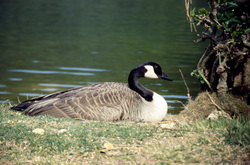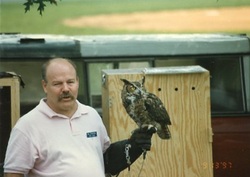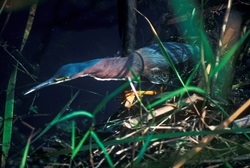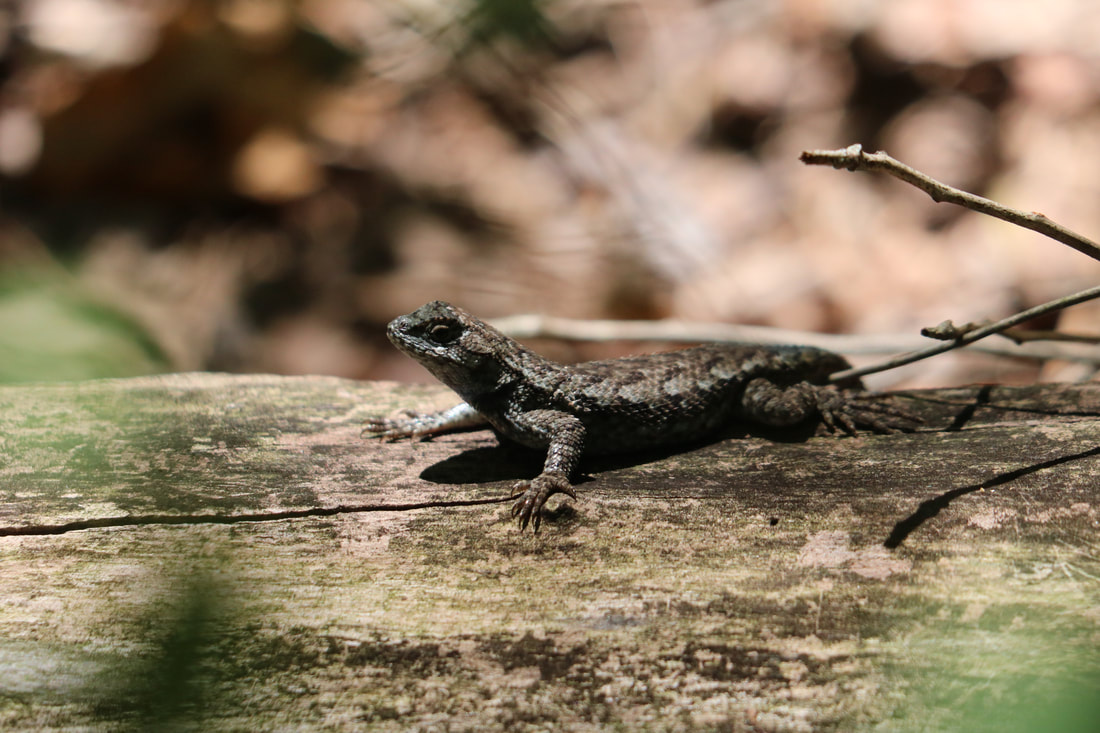While developers claim the construction of a Wal-Mart Supercenter near Chattanooga’s Brainerd Levee will result in jobs and economic progress, the project has raised criticism form a number of area residents, complaining that it will destroy everything from the quality of the environment to historic artifacts to neighborhood small business to that sometimes intangible factor, the quality of life.
On July 7, 2003, in Chancery Court, Chancellor Howell N. Peeples granted a restraining order delaying construction until a full hearing could be held. One week later, on July 15, 2003, the same judge, Chancellor Howell N. Peeples, ruled that the plaintiffs, specifically the Tennessee Environmental Council and the Coalition for Responsible Progress, had no standing which effectively dismissed the case. That decision is under appeal, but meanwhile the development goes on.
As construction continues, the developer has made one accommodation to environmental quality, primarily in response to questions that the Tennessee Department of Environment and Conservation raised regarding the destruction of a 2.8 acre wetland on the property. The small wetland will be destroyed by the construction, but the developer has begun mitigation by construction of an additional 11 acres of new wetland further north. The mitigation will expand a large existing wetland adjacent to the levee.
The wetland mitigation project replaces inundated wetlands at a 4 to 1 ratio. Although some residents complain that the mitigation is itself destructive because it involves removal of a large tract of loblolly pines and substantial amounts of soil, construction will, no doubt, increase the numbers of birds in the wetland area, and increase opportunities for wetland bird watching.
On a historic note, the location of the Wal-Mart construction is adjacent to the historic Brainerd Mission Cemetery and includes portions of an historic mission to the Cherokee Indians. The mission site later became a detention camp for the Cherokee, prior to their removal on the trail of tears. As such, it is a significant site for the Trail of Tears National Historic Trail.
In a letter dated May 19, 2003, and sent on United States Department of Interior letterhead stationery, Jere L Krakow, Superintendent at the National Trails System office expressed concern that this development might impact the historic Brainerd Mission site, including the site of Bird’s Mill on the banks of Chickamauga Creek.
In part, Krakow stated, “Any new development that has the potential to further compromise the extant or archaeological resources of the historic Brainerd Mission or to compromise the present or future ability for preservation, public access, use, and interpretation of the cemetery and historic mission is of significant concern to the National Park Service and the Trail of Tears National Historic Trail. Current proposed development near the cemetery and historic mission site might have the potential to compromise archaeological resources associated with the mission and or public use and interpretation of the mission. We strongly encourage all efforts be made, prior to or as a condition of development, to ensure that archaeological investigations are completed and archaeological resources are avoided. We also encourage that efforts be made to avoid any impacts to above ground and archaeological resources that compromise the future ability for public use and interpretation of the historic Brainerd Mission and Cemetery. We further encourage that associated tribes, particularly the Cherokee Nation of Oklahoma and the Eastern Band of Cherokee Indians that have strong cultural affiliations with the Brainerd Mission be consulted as a part of any proposed development with potential to impact cultural resources associated with the mission.”
Mr. Krakow’s comments were echoed by Vicki Rozema, author of Footsteps of the Cherokee. In a press release from the Coalition for Responsible Progress, she is quoted as saying, “I’m angry that with the building of that access road we have lost the last remnants of the historic mill site and a significant part of our cultural history.” She continues, “Both the road and the land for the Wal-Mart are part of the Cherokee Brainerd Mission lands prior to the Trail of Tears, that included the mill site, the creek ford where Cherokee and Civil War soldiers alike crossed, as well as the Brainerd Mission Cemetery now isolated by pavement.”
As citizens debate the question, to mall or not to maul the landscape, the construction goes on. Meanwhile, a few hundred yards to the north, the bird life goes on, and will no doubt quickly take advantage of the new wetland created by the mitigation process. A recent walk on the levee revealed a large flourishing bird population. This is what I saw.
The Blue-winged Teal at Brainerd Levee are in transition. Of course, many birds spend a good portion of their lives in transition, making a spring migration from their wintering grounds to the summer breeding habitat, and back again in the fall. The teal though are engaged in a different seasonal change.
The drakes have spent the summer in the eclipse plumage that makes them indistinguishable from the female ducks. Now the grayish-brown head is beginning to show the white crescent, just behind the beak, that serves as an identifying field mark for these birds. It is a beacon for the entire world to know that these are blue-winged teal, not any other duck.
Of course, their small size distinguishes teal from other marsh ducks, and from any distance they seem half the size of the Mallard Duck, American Black Duck or Northern Pintail. This field mark eliminates some, but not all possibilities. The small Blue-winged Teal are separated from their close cousins, the Green-winged Teal only by the powder blue patch on the fore-wing.
The males in breeding plumage are the real key to quick identification of Blue-winged teal, with the white crescent moon on their face, and the dark (nearly black) rump preceded by a white patch.
Soon they will release their near anonymity and assume their winter colors, but for now they glide across the pond in a half changed state, grazing on the water plants just below the surface. In this grazing, they are joined by their larger cousins, the mallard ducks and Canada Geese.
Feast for the ducks is accompanied by famine for the shorebirds. Although I have made several trips to the levee this fall, I have seen neither yellowlegs, nor dowitcher, nor least sandpiper. The rainy summer has kept the marsh filled with water, and there is no exposed mud for migrating shorebirds to search for the small crustaceans and aquatic worms that make up their diets.
Of the many species of shorebirds that migrate through Chattanooga, I have seen only the solitary sandpipers with their distinctive white eye-ring. I saw them on only one occasion. My viewing of shorebirds this fall is limited to three of these “solitaries,” and the omni-present, resident killdeer. The killdeer cross the wet grasses near their marsh and give their continuous mournful calls.
While the shorebirds are absent this year, another migrant has been plentiful. The great egret, also known has the American egret has appeared in numbers ranging from one to thirteen on my many trips out here. In size and behavior they are similar to their close relatives, the Great Blue Herons, but their plumage is entirely white. Their size and their black legs distinguish them from other white members of the heron family.
In hunting, they stand in the water or on the shoreline, as still as any dead tree, as still as death itself. Death indeed is what they are to any passing fish, frog, or water snake, which they soon annihilate with the stroke of their beak, sharper than any spear and swift as the striking of a coiled snake.
The egrets will spend the fall here, hunting and storing up food reserves in their bodies, preparing for a fall journey to warmer hunting grounds. They neither winter not nest in this land. They merely stop here on migration. Meanwhile, another, much smaller hunter proceeds with a chase as different from the egret’s methods as the marsh is different from dry land.
The kingfisher that I normally see at this marsh has been strangely absent from view today. I am surprised by its absence, since I see the bird on nearly every trip here.
On my return trip, walking back toward the parking lot, I hear the rattling call of the kingfisher from the willows across the water. The bird is present, but in hiding, revealed only by its unique call.
Then it breaks from the cover and flies across the water, low. It is hunting for a fish dinner. I see the kingfisher stop and perch on a fence that runs right into the water.
The bird perches only briefly, it has made a rest stop on its predatory flight. Then it is up high, hovering over the marsh like a miniature osprey, preparing to descend and deal death to the fish below.
Only the hovering is like an osprey through, the kingfisher is not a raptor like the osprey or bald eagle. They grasp their victims in the talons of their feet and barely wet their feathers. The kingfisher grasps a fish with its beak.
I see the kingfisher hover and descend. The descent ends with its whole body immersed in the water. Then it emerges, with no fish in its razor sharp beak, and flies across the water.
Not easily discouraged, the bird hovers and dives again and again. Finally it moves to the trees across the marsh, perhaps with meal in beak, though I really can’t tell from this angle.
As I leave the Marsh, the bird is hovering over the water again. I am uncertain as to whether it failed in its last attempt, or is simply hungry for more fish. In either event, the marsh will provide a feast for kingfisher, heron, egret, and duck. It provides a physical feast for the birds and a psychic feast for me as I leave happy with the day’s observations and discoveries.
As the march of progress continues to assault the natural environment the question remains, will we preserve the unique beauty of this wetland and its bird species both resident and migratory, or will they become only one more monument to “progress.”






 RSS Feed
RSS Feed